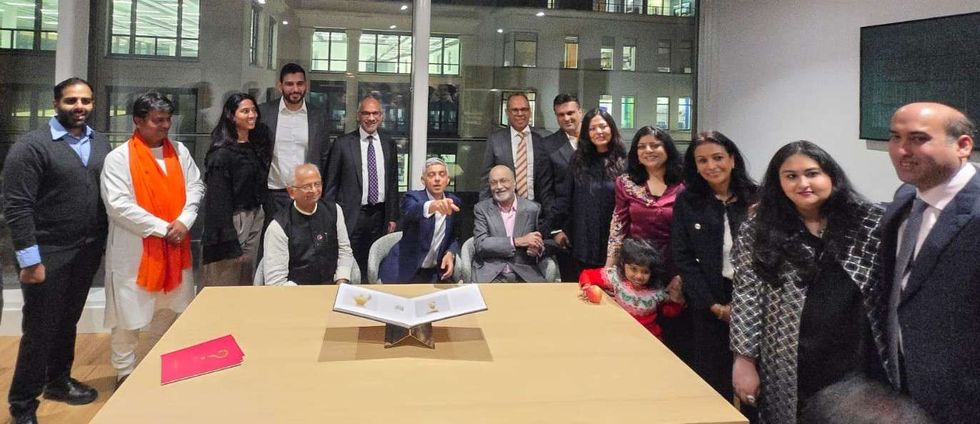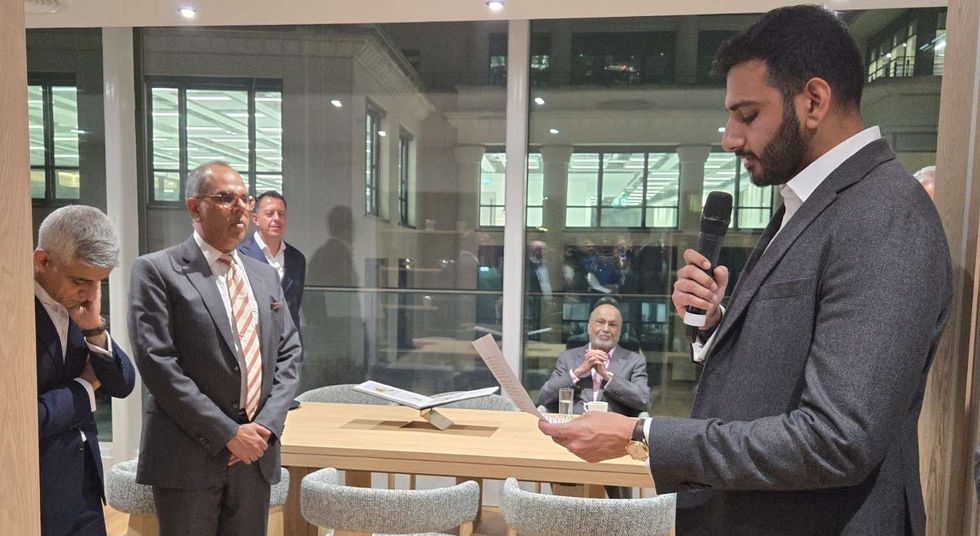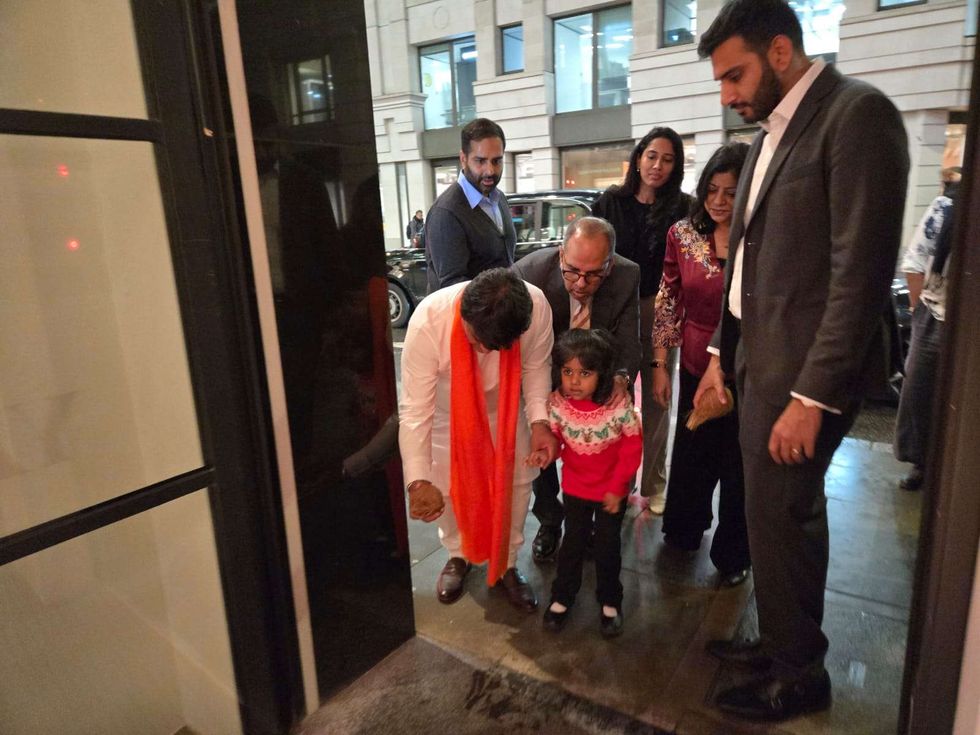His Highness Prince Karim Aga Khan greets India Prime Minister,
Shri Narendra Modi, in New Delhi on February 21, 2018.
His Highness Prince Karim Aga Khan greets India Prime Minister,
Shri Narendra Modi, in New Delhi on February 21, 2018.

(Left to right) Kalpesh Solanki, Shailesh Solanki, Jaimin Solanki, Sadiq Khan, Nirmal Sethia at the the ribbon-cutting ceremony
A new chapter in British Asian enterprise was unveiled in the heart of the City of London as Vismay, a premium managed office development at 41 Moorgate, was formally inaugurated last Tuesday (9). The prestigious ceremony was attended by leading figures from business, politics and the wider community.
The opening was jointly hosted by The N Sethia Foundation and The Solanki Family Office, with the ribbon cut by Sadiq Khan, mayor of London, marking a significant milestone for London’s diverse and dynamic business landscape.


Vismay is an initiative of Solanki Asset Management Limited, a sister concern of Asian Media Group (AMG); the UK’s oldest and largest Asian media house, founded by the late Ramniklal C. Solanki CBE.

Mayor of London hails AMG’s contribution
In his keynote address, mayor Sadiq Khan paid tribute to the late Ramniklal Solanki CBE, recalling his enduring vision and remarkable impact on British society.
“Ramniklal Solanki was a towering figure whose work gave a powerful voice to the Asian community in Britain,” the mayor said. “Today, Asian Media Group stands as a vital platform that connects communities, businesses and governments, and plays an important role in strengthening social cohesion and economic participation.”
Welcoming the launch of Vismay, the mayor described it as a strong vote of confidence in London and its diverse business ecosystem.

A name rooted in legacy
Addressing the gathering, Jaimin K Solanki, who is leading the Vismay project, spoke about the significance of the name and the legacy it honours.
“Vismay means wonder and amazement in Sanskrit,” Jaimin Solanki said. “It was the word my late grandfather, Ramniklal Solanki, used affectionately for my grandmother, Parvatiben. This project is our humble tribute to them- to their values, their vision and their lifelong commitment to community service.”

Recalling his grandfather’s journey as a pioneer of British Asian media, he reaffirmed the family’s commitment to carrying forward those ideals.
“My grandparents taught us that success must always walk hand in hand with humility and responsibility. Through Vismay, we are committed to fulfilling their dreams by blending heritage with modernity and creating spaces that encourage growth, creativity and collaboration.”
Praise for the Solanki family
Renowned entrepreneur and philanthropist Shri Nirmal Sethia praised the Solanki family for their lasting contribution to British society.
“The Solanki family represents one of the finest examples of values being preserved and strengthened across generations,” Nirmal Sethia said. “From media to enterprise, their journey reflects integrity, service and a deep sense of responsibility to the community.”
Spiritual blessings and distinguished presence
The ceremony was spiritually inaugurated with a Vedic prayer and Vastu Puja conducted by Dr M N Nandakumara MBE, Executive Director of the Bhavan. A sacred coconut-breaking ritual, led by HH Shri Rajrajeshwar Guruji, offered blessings for the new venture.


The event was attended by several distinguished guests, including Lord Tariq Ahmad, senior leaders from business and community organisations, members of the Solanki family, and close friends and associates.
Also present were Kalpesh Solanki, group managing editor; Shailesh Solanki, executive editor; and Aditya Solanki, chief operating officer of Asian Media Group, alongside members of the Solanki family, representing the next generation of leadership strengthening AMG’s role as the voice of the British Asian community.
The proceedings were elegantly compered by Head of Front House Colette Whelan, who guided the audience through the programme with warmth and poise.
By clicking the 'Subscribe’, you agree to receive our newsletter, marketing communications and industry
partners/sponsors sharing promotional product information via email and print communication from Garavi Gujarat
Publications Ltd and subsidiaries. You have the right to withdraw your consent at any time by clicking the
unsubscribe link in our emails. We will use your email address to personalize our communications and send you
relevant offers. Your data will be stored up to 30 days after unsubscribing.
Contact us at data@amg.biz to see how we manage and store your data.